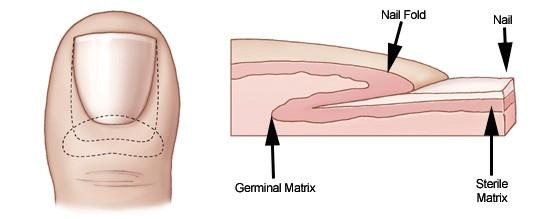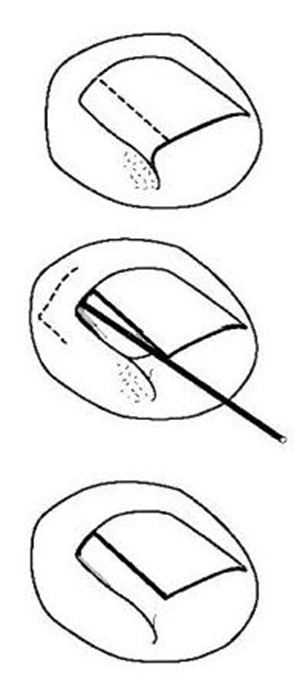 When the edge of the toenail digs into the skin fold beside the nail, the skin becomes red, hot, tender and swollen. This is an ingrowing toenail. Sometimes bacteria from the skin get into the inflamed skin and an infection begins. This results in much more inflammation which may spread throughout the toe or into the foot. Pus may also discharge from the edge of the nail. This usually settles with simple measures such as antibiotics and proper nail care. Sometimes, it is a recurring problem.
When the edge of the toenail digs into the skin fold beside the nail, the skin becomes red, hot, tender and swollen. This is an ingrowing toenail. Sometimes bacteria from the skin get into the inflamed skin and an infection begins. This results in much more inflammation which may spread throughout the toe or into the foot. Pus may also discharge from the edge of the nail. This usually settles with simple measures such as antibiotics and proper nail care. Sometimes, it is a recurring problem.
Dr Sterling will want to check that you have tried all simple measures of stopping the problem. If so, and if the nail is not getting better, it is usually best to remove the corner of the nail bed to stop the edge of the nail growing again. This is be done by cutting it out surgically. This operation is successful in 85% of people. It is usually done under local anaesthetic.
Occasionally it is necessary to remove the entire nail for recurrent ingrown toenails or for other reasons.
THE SURGERY
A general anaesthetic is usually used. Sometimes local anaesthetic can be used – the big toe is injected with local anaesthetic as shown which makes the entire toe go numb. This will take only a few minutes to work. You will still be able to feel the toe moving, but no pain. The surgeon will make sure that the anaesthetic is working before proceeding.
A small portion of the nail is then removed, and the underlying tissue from which the nail grows is exposed. A small section of this is removed to stop this part of the nail growing again.
Occasionally, the entire nail needs to be removed. This is done by removing the entire section of the tissue underneath the toenail, and requires cutting the skin at the corner of the nail.
CAN IT BE DONE AS A DAY CASE OPERATION ?The operation is almost always done as a day case. This means that you are admitted to hospital, operated on and discharged home on the same day. WILL I HAVE TO GO TO SLEEP (GENERAL ANAESTHETIC )?This operation is normally done under local anaesthetic, as described above. |
FOLLOWING YOUR SURGERY
-
On the Ward
The toenail will have dressings on it that should not be disturbed. You can walk on the foot straight away, but you will require an open-ended sandal to allow for the dressings and to make sure there is no pressure on the toe.
-
When you go home
Keep the foot elevated as much as possible for the first week. Expect some pain to begin once you get home as the local anaesthetic wears off. Simple panadol is usually all that is required for pain relief.
The outer bandage can be removed 2-3 days after the operation. The underlying dressing of the toe should remain.
Further AppointmentsYou will be seen in Dr Sterling’s rooms 10-14 days after your operation. The physiotherapist will be present to help. The dressings will be removed, and the toe inspected. The toe should be healed enough to allow normal shoewear. |
HOW SOON CAN I….
-
GO BACK TO WORK?
If you can work and sit with your foot up most of the time (basically in a desk job), you could go back to work almost immediately. On the other hand, if you do a heavy manual job and require enclosed footwear, you may need two or three weeks off work. How long you are off will depend on where your job fits between these two extremes.
-
DRIVE?
If you have your left foot operated on and have an automatic car you can drive almost immediately, when your foot is comfortable enough. Otherwise you will have to wait until the toe is healed, usually 2-3 weeks after surgery.
When you return to driving you need to take it gradually at first and drive only short distances. Also remember that if you drive before you can stop or manoeuvre in an emergency your insurance will not cover you in the event of an accident.
-
PLAY SPORT?
Once the toe has settled and is pain-free, a gradual return to sports is encouraged.
IF YOU ARE CONCERNED:
|
